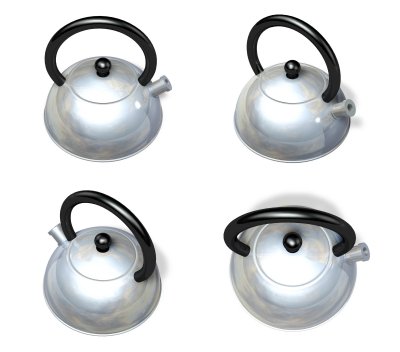Even while formal evaluation cannot be replaced, it's surprising how many conditions a few simple cares like hydrotherapy can benefit. Yet optimal health only comes when the needs of our whole being are met. While we often hear about physical and mental health, spiritual needs tend to be overlooked. This site takes its inspiration from the healing ministry of Christ, who cared for people in mind, body, and spirit. For more about how water provides symbolisms that explain his spiritual healing influence, or other spiritual questions, see this post at my other website, www.CosmoQuestions.com.
Steam Inhalation

Steam inhalation is a moist heat method which is extremely easy to do and can partially relieve discomforts associated with colds and flu, such as nasal congestion, sore throat, cough, etc. Like many hydrotherapy techniques, it promotes general comfort and relaxation as well.
Effects / Benefits
- Warming and soothing to the respiratory tract
- Relieves nasal and lung congestion
- Soothing to laryngitis or coughs
- Increases blood flow in the respiratory passages
- Loosens respiratory secretions and makes them easier to expectorate
- Can be used as a facial skin treatment as well
Contraindications / Precautions
Persons with advanced pulmonary disease (COPD), congestive heart failure or compromised cardiovascular systems may have increased difficulty breathing warm, moist air.
Persons with conditions which could be worsened by leaning the head forward (inner ocular pressure, recent cataract surgery, etc.) should avoid leaning the head forward for this technique.
Be careful to avoid burns or spills while handling the pan of hot water. Handle it with two hands. Very weak persons should have assistance with carrying the pan to the table.
Avoid overfilling the pan with water. Filling it only half full of water lessens the chance of spills and burns.
Equipment
Boiling pan about half full of hot water
Towel
Cold Compress (ice basin with cold cloth)
Technique
Being careful to avoid spills or burns, turn of the stove and place the pan of hot water with a hot pad on the table.
The person experiencing the technique should lean their face over the steaming hot pan and cover their head with a towel. Inhale the steam for a period of 10-15 minutes, repeat two to three times daily as needed.
Some people recommend putting a drop or two or eucalyptus oil on top of the water for enhanced nasal-clearing effects (8).
Finish by wiping the face with the cold compress to close the pores, enhance immune response and have a stimulating effect.
References
8. Thrash, A, Thrash, C. Home Remedies. Seale: NewLifestyle Books; 2005.
Image courtesy of FreeDigitalPhotos.net.